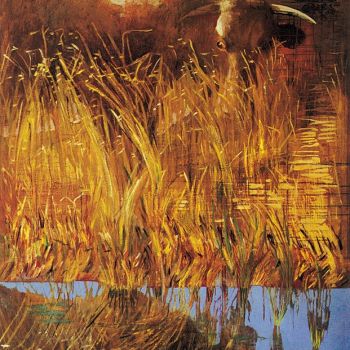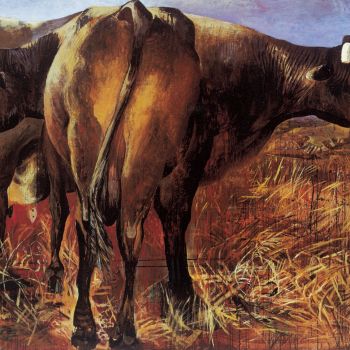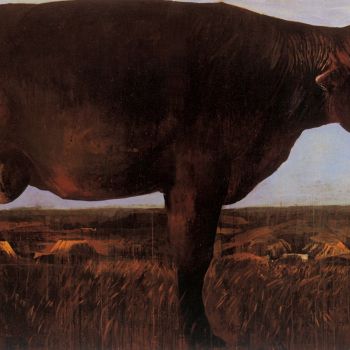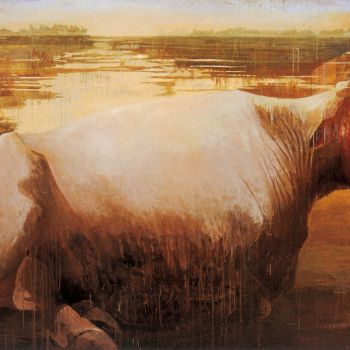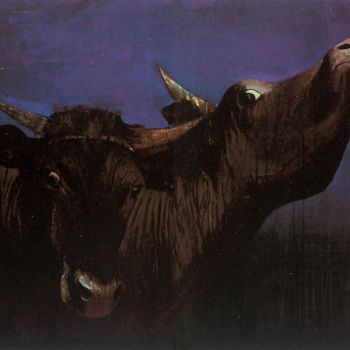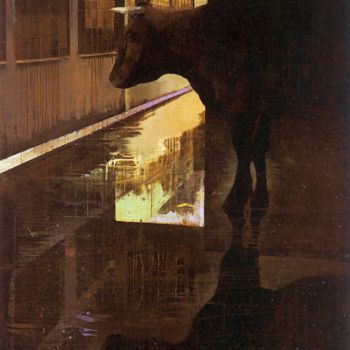(G. Carducci) [“I love you, oh pious ox; you infuse into my heart so mild a sentiment of vigor and peace.”]
With 19th-century realism these animals saw themselves attributed the role of paragon of peaceful toil; they became the representatives of ancestral force, solidly rooted in the traditional values of the land. At that time spectators discovered images that confirmed bucolic serenity where these massive bodies were startled in the edifying fatigue of labor or abandoned to restorative rest.
It was perhaps later with Segantini that symbolism would perceive in this lyrical appearance a foreshadowing of unavowed anxiety.
Closer to us Pop Art could have appropriated the image of the animal, yet such a recuperation would have surely functioned in terms of emblematic glorification and would have required a kind of stylization of the plastic rendering in order to better reveal this deification of the profane.
With Irini Iliopoulou we observe a different kind of disquiet under misleading signs that might make one think of naturalist representation.
The bovines are indeed present, imposing their massive bodies, flaunting their generous forms.
While offering themselves to our gaze they do not grant anything more than the identification with a fallen myth: they seem to surrender with indifference or resignation to the dull repetition of an ideological model.
In vain we will search for reassuring images from our iconographic memory even if certain landscapes seem to revel in familiar elements: the unreal luminosity might dimly recall the evanescent landscapes where figures of the Renaissance resound, or else the nuances of twilight and pantheistic symbolism.
But the paint itself betrays a secret emotion in the streaks bleeding truth. The refinement and the discreet balance of pictorial techniques attempts to convey this emotion that the commonness of the subject seems to contradict. Sometimes mischievously academic or rigorously symmetrical the animals’ poses, rather than evoke a feeling of volume, yield the imposing surface of these fleshy masses that nearly spill outside of the frame.
Representing some of the bovines in a lateral view emphasizes the distancing effect and confers on the subjects the dimension of simulacra: pathetic images, the vestiges of a lyricism devoid of meaning. When we directly face these animals, when our gaze forces this simulation, they appear to be touched in their vulnerability while pride and distrust cross their debased gaze, fixed in an iconic blue. It is in this moment that they come alive, that the pictorial effect takes on volume and the twisting of the bodies reveals an unexpected energy, a hunted sensitivity.
It is perhaps their refusal to become ideological pretexts for a culture that does not dare assume responsibility for its own impotence but draws nostalgically from a mythical Nature instead.
Giuseppe FRIGENI
2.3.1990


